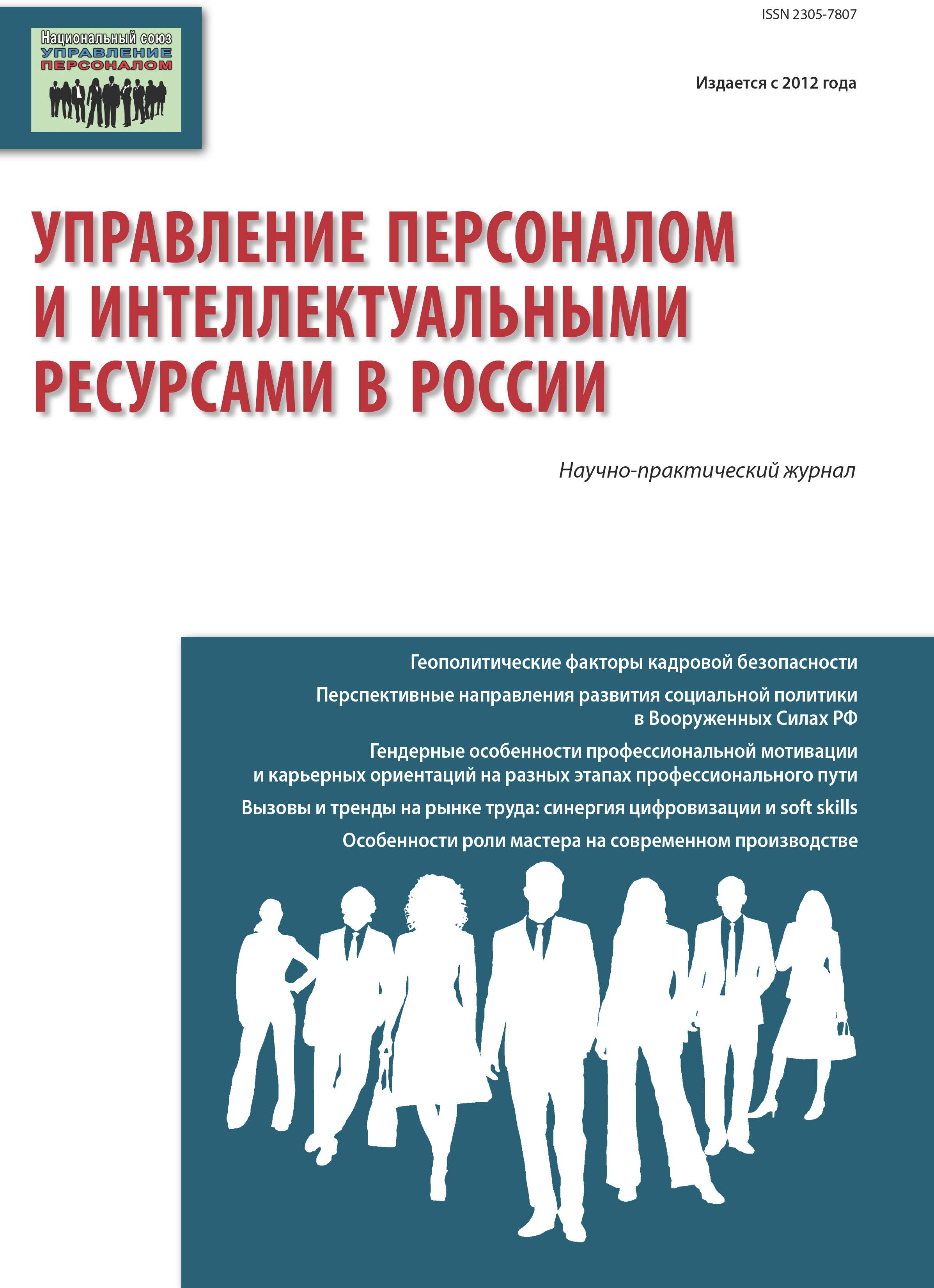Moskva, Russian Federation
The article examines the use of various motivation factors in order to retain personnel in the organization. The relevance of the research topic is due to the fact that the complexity of today's business environment is constantly changing the settings in which organizations compete for survival, with the result that special attention is paid to the acquisition and retention of quality employees, as this is seen as a key factor underlying organizational success. While many other resources are required to run a business, people are the most valuable resource that determines the success of every organization. The article considers rewards and compensation, career management, work-life balance, staff engagement, and job satisfaction as the main factors affecting staff retention. The practical significance of the study lies in the fact that its results will help organizations use both modern and traditional methods of human resource management in order to retain employees.
motivation and incentives, staff retention, rewards and compensation, career management, work-life balance, staff engagement, job satisfaction
1. Armstrong M. Oplata truda: Prakticheskoe rukovodstvo po postroeniyu optimal`noj sistemy` oplaty` truda i voznagrazhdeniya personala [Remuneration: A Practical Guide to Building an Optimal System of Remuneration and Staff Remuneration]. Dnepropetrovsk: Balans Biznes Buks Publ., 2007. 98 p.
2. Arthur J. Effects of human resource systems on manufacturing performance and turnover // Academy of Management Journal, 1994, 37(3). - PP. 670-687.
3. Beauregard T.A., Henry L.C. Making the link between work-life balance practices and organisational performance. // Human Resource Management Review, 2009, I. 19(1). - PP. 9-22.
4. Becker B. E., Gerhart, B. The impact of human resource management on organisational performance: progress and prospects. // Academy of Management Journal, 1996, I. 39. - PP. 779-801. EDN: https://elibrary.ru/BWMNZB
5. Bhatnagar J. Talent management strategy of employee engagement in Indian ITES employees: key to retention. // Employee Relations, 2007, I. 29(6). - PP. 640-663.
6. Bratton, J., & Gold, J. Human resource management: theory and practice. (3rd ed.), - Hampshire: Palgrave Macmillan, 2009. - 672 p.
7. Browne B.A. Gender and preferences for job attributes: a cross cultural comparisons. // Sex Roles, 1997, I. 37 - PP. 61-71. EDN: https://elibrary.ru/EQSHEN
8. Cho S., Woods R., Jang S., Erdem M. Measuring the impact of human resource management practices on hospitality firms‟ performances. //International Journal of Hospitality Management, 2006, I. 25(2). - PP. 262-277.
9. Deery M. Talent management, work-life balance and retention strategies. // International Journal of Contemporary Hospitality Management, 2008, I. 20(7). - PP. 792-806.
10. Ellis C. M., Sorensen A. (2007). Assessing employee engagement: the key to improving productivity. // Perspectives, 2007, I. 15(1). - PP. 315-336.
11. Estes S.B., Michael J. Work-family policies and gender inequality at work: A Sloan Work and Family Encyclopedia entry. - URL: http://wfnetwork.bc.edu/encyclopedia_entry.php?id = 1230 & area = Al (23.04.2019).
12. Gallup. - Available at: http://gmj.gallup.com. (accessed 23 December 2020).
13. Hall D.T. Dilemmas in linking succession planning to individual executive learning. // Human Resource Management, 1986, I. 25. - PP. 235-265.
14. Khan M.A. Effects of human resource management practices on organisational performance - an empirical study of oil and gas industry in Pakistan. // European Journal of Economics, Finance and Administrative Sciences, 2010, I. 24. - PP. 158-175. EDN: https://elibrary.ru/PMTDCN
15. Lee C.H., Bruvold N.T. Creating value for employees: investment in employee development. // International Journal of Human Resource Management, 2003, I. 14. - PP. 981-1000.
16. Mitchell T.R., Holtom B.C., Lee T.W. How to keep your best employees: Developing an effective retention policy. // Academy of Management Executive, 2001, I. 15. - PP. 96-108. EDN: https://elibrary.ru/DQONWB
17. Parker O., Wright L. Pay and employee commitment: the missing link. // Ivey Business Journal, 2000, I. 65. - PP. 70-79.
18. Samuel M.O., Chipunza C. Employee retention & turnover: using motivational variables as a panacea. // African Journal of Business Management, 2009, I. 3(8). - PP. 410-415.
19. Schermerhorn Jr. J.R., Hunt J.G., Osbom R.N., Uhv-Begin M. Organizational Behavior (11th ed.). - Pennsylvania USA:.John Wiley & Sons Inc., 2011. - 648 p.
20. Sempane M., Rieger H., Roodt G. Job satisfaction in relation to organisational culture. // South African Journal of Industrial Psychology, 2002, I. 28(2). - PP. 23-30.
21. Shaw J.D., Gupta N., Delery J.E. Alternative conceptualizations of the relationship between voluntary turnover and organisational performance. // Academy of Management Journal, 2005, I. 84. - PP. 50-68.






